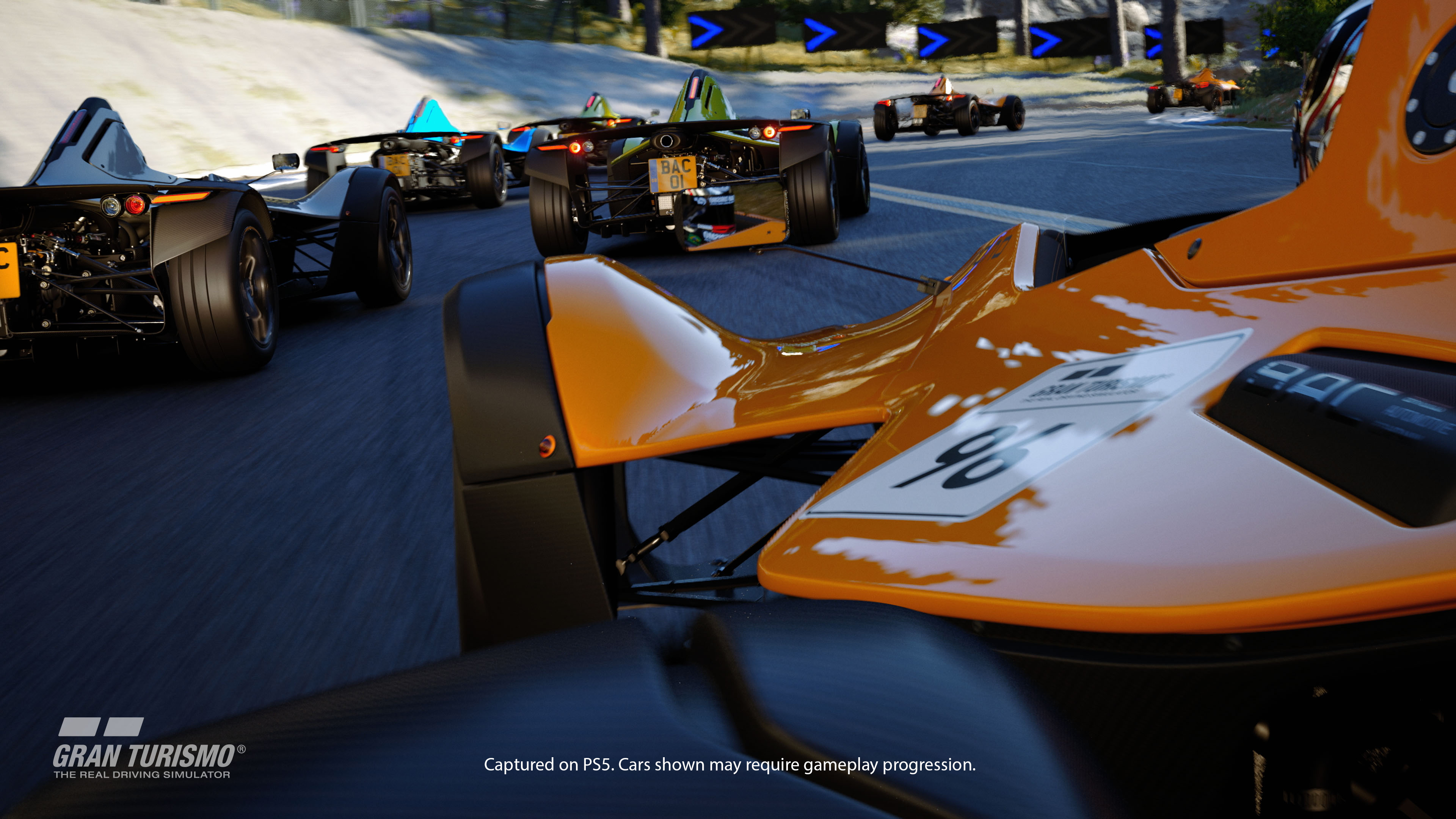PS5 and Xbox Series X ray tracing: Here's why it's a big deal
Here’s what you need to know about ray tracing for the PS5 and Xbox Series X

Ray tracing is arguably the future of graphics, alongside higher resolutions and smoother framerates. And that especially looks to be the case with the PS5 and Xbox Series X.
Both of the upcoming next-generation consoles will employ ray tracing rendering support, something that’s only just started to become widely available in the high-end PC gaming world. If you want a gaming machine with dedicated ray-tracing hardware, you’d need one of our picks for best gaming PCs, or a gaming laptop with at least an Nvidia GeForce RTX 2060.
- PS5 vs Xbox Series X: Which console is for you?
- Windows 10 May update is officially a disaster
- Plus: Forget PS5 — GeForce RTX 3080 leak shows PC gaming is the future
Such machines don’t come cheap. But that’s set to change with Sony and Microsoft’s new game consoles, as they should both be able to offer the power and tech to support ray-tracing at a price that’s predicted to be cheaper than even a mildly powerful gaming PC.
This could have the knock-on effect of making ray-tracing more widely available in games, which in turn could help developers and engineers find more ways of running ray-tracing on a wider variety of machines. And that’s good news for people who want games with striking and realistic lighting.
What is ray tracing?
Ray-tracing is essentially the means to inject much more realistic lighting into a virtual environment, whether it’s a game or a Pixar movie. It involves tracking the way light travels around an environment, including all the ways it bounces and refracts off different surfaces, hence the name ray-tracing.
Think of it like this: Light is fired out of a camera and hits a reflective surface, which then bounces light onto nearby glass, which then refracts the light onto a nearby wall. Ray-tracing effectively renders all these paths, as well as the light's journey from the camera. This is similar to how light bounces off of surfaces and into our eyes, allowing us to see. And this is all done in real-time, rather than being pre-rendered in a single frame.
In games and virtual environments that don’t use ray-tracing, lighting is simulated through a process called rasterisation. In a nutshell, this involves rendering 3D objects onto a two-dimensional screen using a mesh of triangles, which are then converted into pixels or dots by a computer and used to determine an object’s place in a scene. The addition of pixel processing, more commonly called shading, then changes the colours and lighting of certain objects, depending on their position relative to the player or camera.
Sign up to get the BEST of Tom's Guide direct to your inbox.
Get instant access to breaking news, the hottest reviews, great deals and helpful tips.
This has paved the way for very impressive lighting in modern games. God of War is an excellent example of this traditional method. But it can’t compete with ray-tracing.
By tracing how simulated light travels around and interacts with its environment, ray-tracing paves the way for real-time ‘global illumination’. This means the objects in a scene interact with light rays bouncing all over the place, rather than just with direct light from one source. This leads to more realistic lighting for a whole scene.
As mentioned, ray-tracing has been used to great effect in animated movies. And it looks very impressive in the relatively small amount of games that support it, such as Metro Exodus and Control.
Ray-tracing today and tomorrow
Ray-tracing rendering in real-time is very computationally heavy, which is why the GeForce RTX 20-series graphics cards from Nvidia have dedicated ray-tracing units. Other recent Nvidia graphics cards, and even some AMD Radeon GPUs, can use software simulation to provide ray-tracing rendering, but the simulation is not powerful enough to run ray-tracing effectively.
Unless you have a very powerful PC— say, a machine running a GeForce RTX 2080 Super — you’re not likely to be able to use ray-tracing in a game at 4K, while running at a smooth 60 frames per second. In fact, switching on ray-tracing is one of the best ways to tank your frame rates. Nvidia does have its deep learning supersampling (DLSS) tech that can help things along, but ray-tracing at maximum settings is mostly beyond the reach of all but the most powerful PCs.
However, ray-tracing support in the PS5 and Xbox Series X - both of which use PC-derived CPUs and GPUs from AMD - could change all that.
We don’t know for sure how well the next-generation consoles will handle ray-tracing, given that their specifications aren't any better than a high-end gaming PC. But optimisations and how the hardware works together in a dedicated console can deliver more performance than raw specs alone would suggest.
As such we could see full ray-tracing support in future PS5 and Xbox Series X games. We could also see a less demanding, but still effective, mix of ray-tracing rendering and more traditional rasterization in order to create more realistic graphics and lighting.
But the most interesting thing here is that the new consoles could normalise ray-tracing in games. If millions of people have consoles that can deliver ray-tracing, rather than a relatively small collection of PC gamers, then developers are more likely to enable ray-tracing in their games.
And that could lead to ways to make ray-tracing less demanding, thanks to software optimisation. Eventually, people with gaming PCs running less powerful GPUs might still be able to see ray-tracing in all its glory.
Lighting the future of graphics
Better reflections and lighting might not seem like a big deal for games when sharper textures, more details, and 4K resolutions tend to be championed as graphical highpoints. But you really need to see ray-tracing in action to really see its effect.
In the likes of Shadow of the Tomb Raider and Control, the effect of ray-tracing is reasonably subtle, but still adds more depth and realism to the games. The reflective floors and surfaces of Control’s Oldest House really ‘pop’ with ray-tracing enabled.
In Battlefield V, ray-tracing adds a lot more detail to environments, thanks to bullet flashes and fires reflecting off of shiny gun barrels and puddles of rain. But it’s with the addition of ray-tracing to older, less graphically advanced games where we can see the effect of ray-tracing in action.
Minecraft got a ray-tracing patch that allows people with GeForce RTX cards to add fancy lighting to the game. And the feature utterly transforms Minecraft.
The blocky and rudimentary looking game turns into something that wouldn’t look out of place in an high-end Scandivaian architecture agency. The lighting adds sumptuous amounts of depth to the game’s low-fi graphics.
It’s the same story for Quake II RTX, a version of the venerable deathmatch game designed for people with GeForce RTX graphics cards. Ray-tracing does a good job of making a 1997 game look like it’s at least a decade newer.
The formerly dark and very brown game gets bathed in natural light and reflections. It’s still recognisably Quake, but its a compelling example of the impact ray-tracing can have on games.
Given how impressive games on current generation hardware can look (such as The Last of Us 2 on the PS4), there’s an argument that the graphical improvements from current-gen to next-gen consoles won’t be as pronounced as the move from the Xbox 360 and PS3. But it’s likely that ray-tracing will be the next step in graphics that marks the shift in console generations.
And when such realistic lighting is combined with the enhanced audio that the PS5 and Xbox Series X promise - 3D Audio for the former and dedicated audio hardware for the latter - then we could be looking at far more immersive games overall.
Roland Moore-Colyer a Managing Editor at Tom’s Guide with a focus on news, features and opinion articles. He often writes about gaming, phones, laptops and other bits of hardware; he’s also got an interest in cars. When not at his desk Roland can be found wandering around London, often with a look of curiosity on his face.

